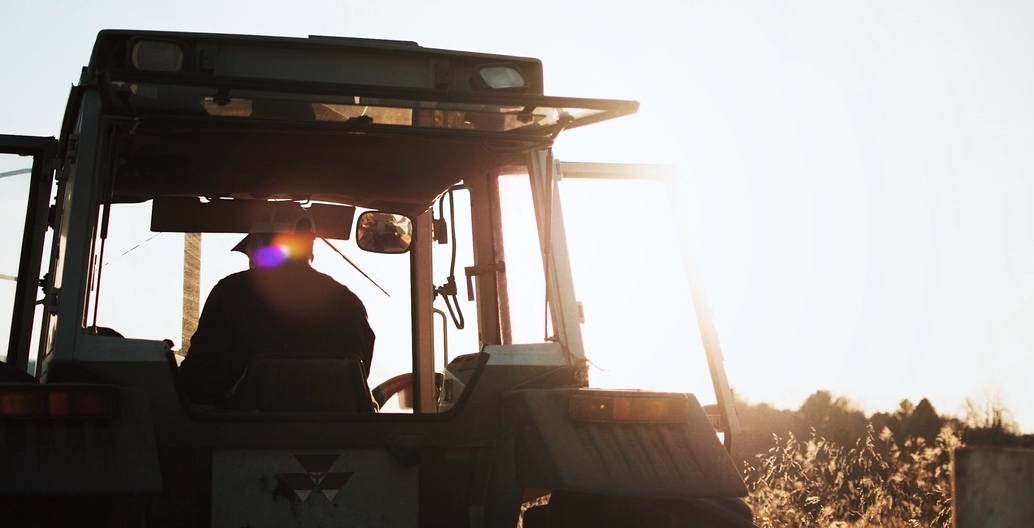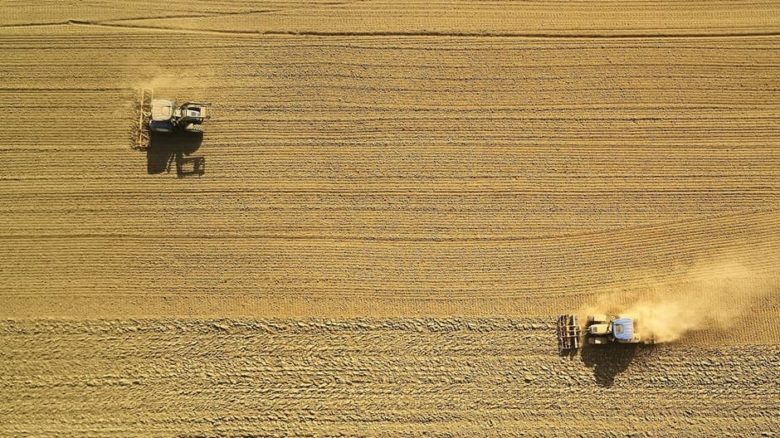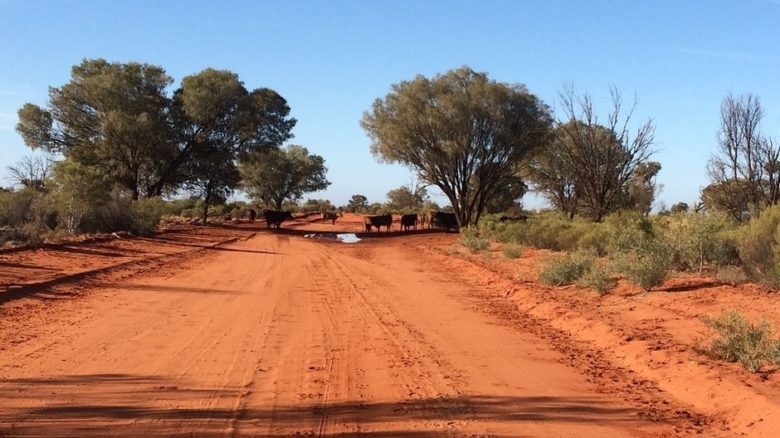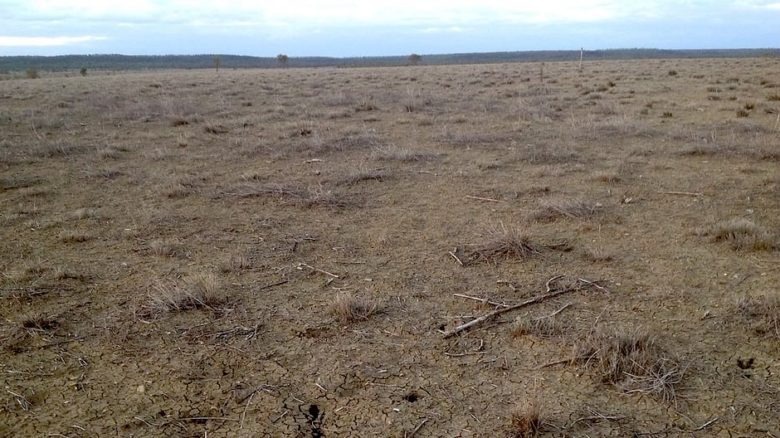
The farmers fighting climate change
Farmers for Climate Action is challenging a common conception of the farming community. With farming contributing 13 percent to Australia’s carbon emissions, FCA gives support and advice to farmers looking to diversify income and regenerate their land in the face of a changing climate.
This article is part of Foreground’s 2 Degrees themed series of essays
Farmers are traditionally a politically conservative group. Perhaps that is partly because they operate in such a volatile environment. However, the same factors that make farmers vulnerable to the elements is driving them to take action on climate change in the absence of leadership from the federal or state governments. The conversation around climate change in rural communities has not always been open, but that is changing. The shift was evident last year when the President of the National Farmers Federation Fiona Simson told the National Press Club that “tiptoeing” around the issue of climate change was not helping farmers or rural communities, and called for action.
The conversation is now shifting with the undeniable changes in weather patterns. Even though there are rural and regional Australians who appear to reject climate science, research has shown that they may be rejecting the label ‘climate change’, while still acknowledging its existence on the farm by recognising and seeking to respond to the changing weather patterns they are facing.
Farmers for Climate Action, the first agricultural climate alliance in Australia formed in 2015. The group had its genesis in a meeting of approximately 30 farmers who saw an urgent need to change the conversation around climate change. Tony Abbott had just abolished the carbon tax, and fourth generation sheep grazier Charlie Prell, who is now the Deputy Chair of FCA, says the discourse was toxic. “We decided collectively to explore the practicality of setting up a group to advocate for action on climate change,” Prell says. “We had to – and still need to – move past the interminable debate in this country and the US about the reality of climate change.”
The group works primarily within rural and regional areas to help people make changes on farm, but also advocate for change within their communities. According to Prell the FCA is political, but non-partisan. “We put out a message, and it’s up to the people listening whether they heed our call or not,” he says. “What’s important to us is providing people with the best science on climate change and the support if they decide they want to have these conversations, which can be difficult.” Prell also identified groupthink as being a problem in some small rural towns. “If everyone else at the pub is saying Barnaby Joyce is a good bloke and climate change isn’t real, it can be very confronting for someone to stand up and say the opposite.”

Industrial agriculture requires intensive inputs to stay fertile and "moving away from that is like quitting smoking". Photo: Johny Goerend

Regenerative farming can take time to transition. Wind farms provide ongoing passive income security. Photo: Matthias Süßen

Climate volatility saw over 500,000 head of cattle die in floods earlier this year in drought-stricken parts of Queensland. Photo: thefollowmg

Drought is now a regular feature of once-reliable farming areas in a changed climate. Queensland 2014. Photo: Btcpg
And it is important that farmers take action, not just because agriculture contributes approximately 13 percent of Australia’s greenhouse gas emissions, but to ensure the future of what are often family-run businesses. It is widely accepted that farming in Australia is getting more difficult, due to the increasing volatility of our climate. We saw extreme examples earlier this year, when drought-stricken parts of Queensland were flooded with three years worth of average rainfall in a week, leading to the death of over 500,000 head of cattle. Around the same time Tasmania was fighting bushfires and in far-west New South Wales, the water flow in the Murray Darling was so low that millions of fish died. Further, climate patterns are shifting across Australia resulting in changes to what types of farming practices are suitable in certain areas. For example, areas that were once too wet for cropping now provide viable cropping land due to steady decreases in rainfall. New or different animal and plant varieties are also being considered, such as the recent import of drought-tolerant cypriot vines being trialled in South Australia for the wine industry.
It is the unpredictability of weather patterns that Prell sees as the biggest challenge facing farmers today, and the reason that resilience is key to survival. “It’s important to understand that the problem isn’t just temperatures getting hotter, it’s the volatility of the climate,” he says. “We’re seeing hotter summers and winters, but we’re also getting massive fluctuations with frost. Any plant is highly susceptible to frost and they’re happening out of season, which is seriously impacting on the productivity of grain growers, for example.” For these reasons, FCA runs a program called Climate Smart Agriculture, which educates farmers on how to make their farming operations more resilient and more environmentally sustainable.
There are two main strategies to make a farming practice more resilient. One is shifting from industrial agricultural practices to regenerative farming which involves using fewer or no chemicals, and becoming more in touch with the natural cycles of the land. The second is by finding a supplementary, or passive, income stream. For Prell, this means hosting wind turbines on his property, which are part of the Crookwell 2 Wind Farm. The farm supplies energy to the ACT government as part of its commitment to source 100-percent of its energy from renewables by 2020, which it is on track to do according to the state’s climate change minister. Prell was first approached by wind farm companies around 2000 to see if he’d be interested in hosting turbines. Despite taking nearly 18 years to get the turbines up and running, he says it was worth the wait. “It’s honestly one of the best decisions we ever made,” he says. “The project itself was very new. Now the renewable energy transition is gaining traction, the waiting times won’t be as long.”
Diversification can take many forms other than renewable energy. For example, agri-tourism is a growing industry, particularly in New South Wales where the Department of Primary Industries set up the Visit My Farm website. Other popular options include creating wedding venues, bed and breakfast accommodation and offering ‘taste learn see’ experiences around food production. The novelty of less usual forms of produce being explored – such as camel’s milk – are also proving to be great attractions. The various forms of tourism add a new dimension to farm planning, design and management; it’s a growing industry and area of investment and job opportunity.
Prell says farmers are diversifying and looking to adapt to change but too slowly. “For me as a farmer, the thing that’s really frightening is that the climate changes we’re experiencing now were forecast to happen in the 2030s and beyond. For us as farmers on a local scale, we need to be aware that many of the forecast changes in climate are wrong; not because politicians aren’t taking action, but because climate scientists keep underestimating the speed of change.”
Working in such a volatile environment, it is equally important to have mental resilience, as well as farming resilience. Prell’s passive income stream has helped him and his family significantly in this respect. “Living through the millennium drought with no wind farm, and comparing it to this drought now we have the turbines, the difference is like chalk and cheese,” he says. “During the millennium drought we were both depressed, and my wife had a nervous breakdown from the stress of raising two children on a totally barren landscape.” The passive income from the turbines has also allowed Prell to reduce his stocking numbers, meaning he has not spent any money on feed this season. “We’ve just renegotiated our arrangements with the bank because our debt is going down, and it’s such a huge weight off our shoulders knowing that we now aren’t totally susceptible to weather variations.”
Farmers are also, significantly, shifting from industrial to regenerative agriculture. Industrial agriculture is a chemically intensive method of food production, the development of which exploded in the years post World War II, whereas regenerative agriculture uses no chemical inputs, and involves farming in a way that is more responsive to the natural environment. Prell sees regenerative agriculture as providing a double benefit to farmers. “By definition, regenerative agricultural farming means that you’re using less inputs and becoming more in tune with nature,” he says. “You’re improving the biodynamics of the soil, and at the same time there’s an opportunity to pull large amounts of carbon from the atmosphere.” Regenerative agriculture has also been described as a form of “drought proofing” because of the way it allows pasture to withstand variations in the weather. “Carbon makes good humus, and keeps the soil nice and spongy,” Prell says. “If rain falls onto parched land in summer it runs straight off, but if the soil is rich with carbon and has reasonable vegetation cover then it has the opportunity to absorb some of that water.”
So how hard is it to make the shift from using industrial practices to regenerative agriculture? Speaking from his personal experience, Prell says it is like breaking an addiction. “The problem with industrial agriculture is that the more chemicals you use on your land – fungicides, herbicides, pesticides – the more the soil requires those inputs,” he says. “Moving away from that is like quitting smoking.” There is also a transition period as the land heals, which Prell says can be five to 10 years or more, depending on the condition of the land. This is another area where the passive income stream can make a farm more viable. Prell is in the process of shifting away from industrial agriculture, and hosting the wind turbines is a key part of his resilience strategy, providing an income while his land is going through this transition phase.
Something else Prell would like to see in agriculture (and more generally) is meaningful engagement with Indigenous Australians. “Ideally we’ll have better connection with the Aboriginal people who lived here and worked the land, without chemicals, for tens of thousands of years,” he says. “They know this land; that’s where we need to end up.” Many of the principles of regenerative agriculture are similar to Aboriginal practices, some of which are outlined in Bruce Pascoe’s book Dark Emu. The benefit of putting these principles into action also has the support of non-Indigenous agriculturalists such as farmer and academic Charles Massy. Massy has written extensively about how regenerative agriculture needs to become the norm in farming, to undo the harm that has come from adopting European agricultural practices in an unsuitable environment. Anecdotally at least, it seems that regenerative agriculture is moving into the mainstream.
Only time will tell if agriculture is moving fast enough towards a low carbon future, yet Prell believes we are on the right path. “People aren’t very good at dealing with change, but we’re being forced into it now,” he says. “Once we reach a critical mass, investors will start shifting long-term investments to new technologies and systems. It will be messy because there’s no cognisant agricultural policy in Australia, but I think we’ll get there.”
–
Cat McGauran is a writer and the assistant editor at Assemble Papers. Her background is in law, journalism and housing advocacy.
This article is part of Foreground’s 2 Degrees themed series of essays


